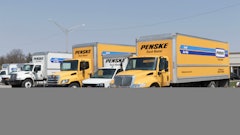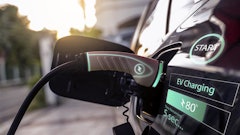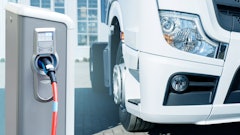
Sustainability legislation is coming fast. A recent blueprint from the Biden administration calls for drastic emissions reductions in light-duty vehicles by 2027.
With light-duty vehicles having the greatest impact on greenhouse gas (GHG) emissions, final-mile companies are scrambling to find the financing and resources needed to replace their gas-powered fleets.
“Retailers are laser-focused on achieving their carbon commitment goals, which means they must work together with their delivery partners to develop effective solutions,” says Emily Phillips, board of directors, National Home Delivery Association (NHDA).
“As retailers delve into their scope 3 emissions, that’s where the transportation sector comes in. Transportation companies need to partner with retailers to figure out how to tackle scope 3 together and find creative solutions. Fortunately, emerging technology in the private sector can help make this process more efficient and transparent,” says Phillips.
Transportation sustainability legislation focuses on emissions
Recently, the Biden administration released the U.S. National Blueprint for Transportation Decarbonization. The transportation sector is currently responsible for one-third of all US GHG emissions. The blueprint, authored by four federal agencies (the US departments of Energy, Transportation, Housing and Urban Development and the Environmental Protection Agency), outlines initiatives to nearly eliminate GHG emissions by 2050.
The blueprint outlines a three-pronged strategy that transportation business owners must prepare for, according to electrek.co:
- Increase convenience. Community design at the local and regional level so that work and the amenities people need are located near their homes.
- Improve efficiency. Expand options like public transport and rail and improve the efficiency of all vehicles.
- Transition to clean options. Deploy zero-emission vehicles and fuels. This is the key strategy that will drive the most emissions reductions. The following chart from the Blueprint lays out this part:
Consumer trends spotlight retailer sustainability practices
Meanwhile, the growing movement of conscious consumerism has retailers examining their sustainability practices to align with their customers’ values and purchasing power. Modern consumers are driven by more than just the bottom line. They seek the best quality, best service and aligned values, including responsible, sustainable practices.
According to a Forbes article, American consumers’ environmental concerns affect their decisions in the checkout line. The surveys referenced in this article revealed that 80% of American consumers consider sustainability when making purchases and that 70% of consumers would change their purchasing decisions upon discovering misleading sustainability practices.
This consumer power is driving significant change in the sustainable practices of retail operations, including partnerships with final-mile providers that deliver products to shoppers’ homes.
Are these final-mile delivery companies practicing sustainability by investing in electric vehicles (EVs)?
The collision between EVs and independent contractor delivery drivers
Investing in EVs is a massive financial undertaking, as well as managing the disposal of older, gas-powered vehicles. EVs also need the proper infrastructure to charge and park when not in use. The US is currently lagging on efficient infrastructure in many areas, including EV resources.
Even in a perfect world where transportation companies could wave a wand and replace their entire fleet with EVs, that would maintain compliance only for businesses whose drivers are company employees. However, most final-mile companies utilize an independent contractor (IC) model.
What’s the problem with that?
Legally, a business cannot dictate the vehicle type ICs use to perform work.
Since independent contractors are responsible for providing the vehicle to perform work, the same challenges of owning EVs at the business or enterprise level are much more cumbersome to an individual. Bottom line – final-mile companies cannot force independent contractor drivers into using EVs without facing a risk of misclassification. And typically, these small business owners do not have the financial resources to own an EV.
Technology is the bridge between independent contractors and EVs
Retailers and shipping partners cannot dictate which vehicles ICs use in their contracts. However, third-party administrators designed for managing IC workforces can offer ICs access to EVs and other benefits without putting the contracting company at risk of misclassification. When ICs enroll in these platforms, they often receive discounts on various business-related items, including on-demand EV rental.
Lack of benefits is a considerable barrier for ICs seeking to grow their businesses. Additionally, access to EVs is extremely limited in some markets. To address these challenges, it's important to build a benefits marketplace to help ICs flourish as entrepreneurs and meet sustainability requirements.
Final thoughts
At present, there is no one-size-fits-all solution to the challenges that retailers, transportation providers and independent contractors face in today’s race to electrify light-duty vehicles. However, efforts are underway. “The transportation sector is vast and complex and will require effort and input from all entities involved,” says Phillips.
While legislative developments are happening fast, technology evolves even quicker. Companies that utilize independent contractors can get ahead of these EV challenges by embracing adopting modern technologies that align with current business models, promote sustainability, attract top-quality ICs, all while minimizing the risks of worker misclassification.

























